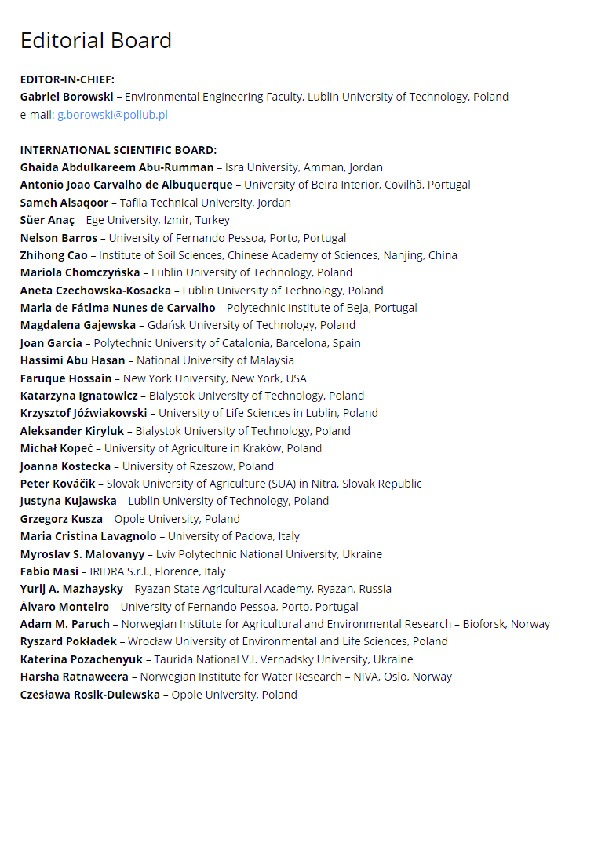id: 33812
Title: Accumulation of Lead and Cadmium by Vegetables at Different Levels of Gray Forest Soil Moistening in the Conditions of the Right Bank Forest Steppe of Ukraine
Authors: Dydiv A., Piddubna A., Gucol G., Vradii O., Zhylishchych, Y., Titarenko O., Razanova A., Odnosum H., Postoienko D., Kerek S.
Keywords: soil, barley, wheat, precipitation, sprinkling, heavy metals, accumulation coefficient, hazard ratio
Date of publication: 2023-10-02 14:25:06
Last changes: 2023-10-02 14:25:06
Year of publication: 2023
Summary: The agricultural economy of many countries of the world is dominated by grain crops, a large portion of which comprises wheat and barley. However, according to scientists from European and other countries, as a result of the climate change, grain crops suffer either an insufficient amount of precipitation or an excessive amount of it, which can affect the yield of crops and cause changes in the concentration of certain elements in them. Dangerous types of environmental pollution, in particular for grains, are caused by heavy metals, among which certain elements (Zn, Fe, Mn, Cu) are important for the development of plants. There are also such metals as Pb, Cd, etc., which at high concentration can lead to poisoning of the plant organism and cause a decrease in their quality and production in general. This paper is focused on the influence of soil moisture level, precipitation and irrigation (sprinkling) on the content and the coefficient of accumulation, as well as the hazard ratio of Pb and Cd for winter wheat and winter barley grains. We determined that against the background of 256.2 to 272.5 mm (precipitation, rainfall) soil moisture during the period from the end of tillering to the earing of the winter cereals, there were decreases by 31.3% and 11.8% in Pb and Cd accumulation coefficients in the Luran-variety barley and decreases by 39.3% and 22.5% in the Akratos-variety wheat, compared with 47.4 to 52.3 mm soil moisture (precipitation) during that period. Decrease in Pb and Cd accumulation coefficients in the cereal grain contributed to decrease in the concentrations of these toxicants in it. In particular, at 266.2 to 272.5 mm level of soil moisture during the indicated growing season of winter barley and winter wheat, the concentration of Pb in the grain from these cereals was 31.8% and 48.9% lower; while the concentration of Cd – was 11.1% and 21.4% lower, compared with 47.4 and 52.3 mm moisture level. At the same time, Pb was characterized by higher intensity of reduction in the grain of the winter cereals than Cd. The hazard ratio of Pb and Cd in the grain of the winter cereals also turned out to be lower when the level of soil moisture was 266–272.5 mm during the tillering-earing period, compared with the level between 47.4–52.3 mm. The prospects for further research are studies of changes in the mineral composition of the soil in the zone of the root system of cereals under excessive rainfall.
URI: http://socrates.vsau.org/repository/getfile.php/33812.pdf
Publication type: Статті Scopus/Web of Science
Publication: Journal of Ecological Engineering. 2023. Vol. 24. № 10. P. 198-204. DOI: https://doi.org/10.12911/22998993/170291
In the collections :
Published by: Адміністратор
File : 33812.pdf Size : 908021 byte Format : Adobe PDF Access : For all

| |
|
|